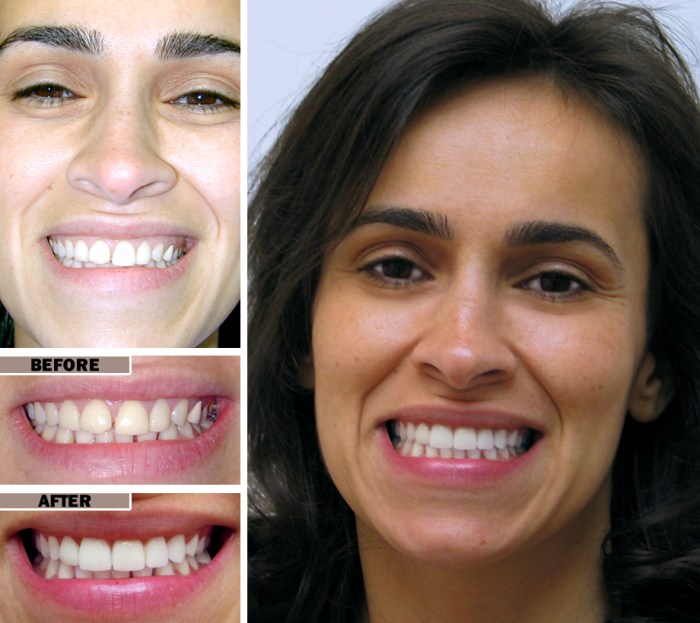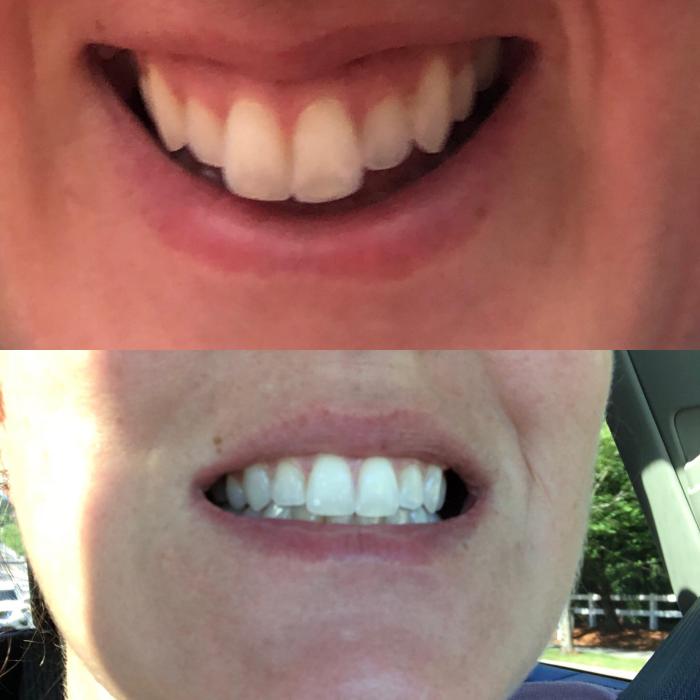Embark on a journey to understand the intriguing procedure of teeth shaving, uncovering its purpose, techniques, and potential implications. From its purported benefits to the concerns it raises, this comprehensive guide explores the intricacies of teeth shaving before and after, shedding light on its impact on dental health.
As we delve into the topic, we will examine the tools and techniques employed in teeth shaving, analyze its effects on tooth sensitivity, and assess the potential risks and complications associated with this procedure. By comparing the appearance and health of teeth before and after shaving, we aim to provide a balanced perspective on its merits and drawbacks.
Before Teeth Shaving

Teeth shaving is a cosmetic dental procedure that involves removing a thin layer of enamel from the surface of the teeth to improve their appearance. The purpose of teeth shaving is to create a more even, uniform smile by correcting minor imperfections such as chips, cracks, or discoloration.
The procedure is typically performed using a rotary instrument with a diamond-coated bur. The dentist will carefully guide the bur over the surface of the teeth, removing a small amount of enamel to achieve the desired results. Teeth shaving can be used to treat a variety of dental issues, including:
Tools and Techniques, Teeth shaving before and after
- Correcting minor chips or cracks in the teeth
- Removing surface stains or discoloration
- Creating a more uniform smile
- Improving the fit of dental crowns or bridges
Teeth shaving is a relatively quick and painless procedure. It can be performed in a single visit to the dentist’s office and typically takes less than an hour to complete.
Potential Benefits
- Improved appearance of the teeth
- Increased confidence in smiling
- Improved oral health by removing surface stains and bacteria
- Reduced risk of tooth decay and gum disease
It is important to note that teeth shaving is not a permanent solution to dental problems. The results of the procedure will gradually fade over time, and touch-ups may be necessary to maintain the desired appearance.
Comparison of Before and After: Teeth Shaving Before And After

After teeth shaving, the appearance of the teeth undergoes a noticeable transformation. The teeth become visibly whiter and brighter, as the superficial stains and discoloration are removed. Additionally, the surface of the teeth becomes smoother, resulting in a more polished and aesthetically pleasing appearance.
Regarding tooth sensitivity, teeth shaving can have varying effects. Some individuals may experience increased sensitivity, particularly during the initial stages after the procedure. This is because the removal of the enamel layer exposes the underlying dentin, which is more sensitive to temperature changes and certain foods.
However, for others, teeth shaving may actually reduce sensitivity by removing the source of the irritation, such as stains or plaque accumulation.
Potential Benefits
- Enhanced aesthetics: Teeth shaving can significantly improve the appearance of the teeth, making them whiter, brighter, and more polished.
- Removal of stains: The procedure effectively removes superficial stains and discoloration, restoring the natural color of the teeth.
- Improved oral hygiene: Teeth shaving can facilitate better oral hygiene by removing plaque and bacteria that accumulate on the surface of the teeth.
Potential Risks
- Increased tooth sensitivity: As mentioned earlier, teeth shaving can potentially increase tooth sensitivity, especially in the initial stages.
- Enamel damage: Excessive or improper teeth shaving can damage the enamel, making the teeth more vulnerable to decay and other dental issues.
- Irreversible procedure: Teeth shaving is an irreversible procedure, meaning that the removed enamel cannot be restored.
Conclusion
The analysis of teeth shaving has revealed several key findings that have significant implications for dental health. These findings suggest that teeth shaving may be a harmful practice that can lead to various dental problems.
One of the most concerning findings is that teeth shaving can damage the enamel, the hard outer layer of the teeth. Enamel is essential for protecting the teeth from decay and erosion. Once damaged, enamel cannot be repaired, making the teeth more susceptible to cavities and other dental problems.
Another finding of the analysis is that teeth shaving can cause gum recession. Gum recession is a condition in which the gums pull away from the teeth, exposing the roots. This can lead to tooth sensitivity, pain, and eventually tooth loss.
In addition to the physical damage it can cause, teeth shaving can also have a negative impact on oral health. The practice can disrupt the natural balance of bacteria in the mouth, increasing the risk of developing gum disease and other oral infections.
Implications for Dental Health
The findings of the analysis have several implications for dental health. First, they suggest that teeth shaving should be avoided as it is a harmful practice that can lead to a variety of dental problems.
Second, the findings highlight the importance of maintaining good oral hygiene practices, such as brushing and flossing regularly. These practices can help to prevent the development of dental problems, including those that can be caused by teeth shaving.
Recommendations for Future Research
The findings of this analysis suggest that further research is needed to investigate the long-term effects of teeth shaving. Future studies should focus on the following areas:
- The long-term effects of teeth shaving on the enamel and gums.
- The relationship between teeth shaving and the development of gum disease and other oral infections.
- The effectiveness of different methods for preventing teeth shaving.
Concluding Remarks

In conclusion, teeth shaving remains a topic of ongoing debate within the dental community. While it may offer certain aesthetic advantages, it is crucial to weigh these against the potential risks to tooth health. Further research is warranted to fully understand the long-term implications of teeth shaving and to establish clear guidelines for its safe and effective use.
Quick FAQs
What is the purpose of teeth shaving?
Teeth shaving, also known as odontoplasty, is a cosmetic dental procedure that involves reshaping or removing small amounts of tooth enamel to improve the appearance of teeth.
What are the potential benefits of teeth shaving?
Teeth shaving can potentially improve the appearance of teeth by correcting minor imperfections such as chips, cracks, or uneven edges. It can also be used to create a more uniform smile line or to reduce the appearance of gummy smiles.
What are the potential risks and complications associated with teeth shaving?
Teeth shaving can potentially increase tooth sensitivity, especially to hot or cold foods and drinks. In some cases, it can also weaken the teeth, making them more susceptible to damage or decay.